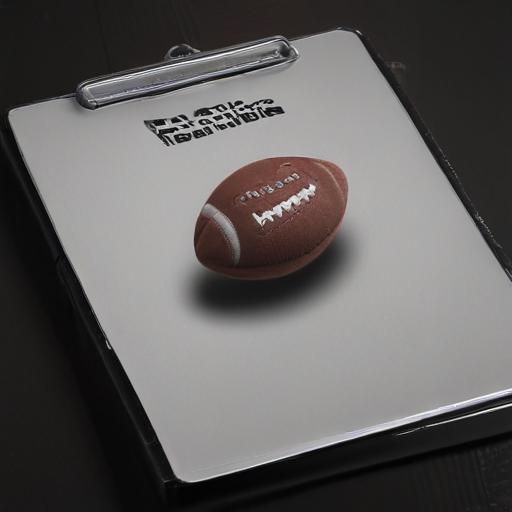A strategic take on a 10-team PPR mock draft: target elite QB or TE early, then build depth
In a 10-team, point-per-reception league, drafting becomes a balancing act between securing top positional advantages and filling out a deep, reliable roster. The featured mock draft illustrates a mindset many fantasy managers use: don’t force fits, but be ready to pounce on premium quarterbacks or tight ends if the board lines up.
The mock starts with CeeDee Lamb at No. 6, with a plan to grab Brock Bowers or Trey McBride in Round 2. The drafters landed on Bowers, eyeing a potential dominant sophomore season and a top-tier tight end finish this year. Jonathan Taylor was the clear pick in Round 3, followed by Jayden Daniels in Round 4, a spot that could’ve yielded Joe Burrow or Jalen Hurts in a different path.
While quarterbacks often slide in these drafts, the strategy emphasizes locking in high-upside options at the two most premium positions early. The writer notes that while it’s not ideal to go four rounds without a wide receiver or running back, the expectation is to have difference-makers at quarterback and tight end, then stack the rest of the roster with solid contributors.
Key picks and rationale from the build
– Start: CeeDee Lamb at 6 gives a high-floor, high-ceiling WR cornerstone, with the plan to pair him with an elite TE threat early.
– Round 2 option: Brock Bowers (tight end) emerges as the favorite target, with the potential to become a season-long difference-maker at the position.
– Round 3: Jonathan Taylor provides early-round RB stability and elite volume.
– Round 4: Jayden Daniels (quarterback) is selected, aiming to secure a weekly QB advantage. The piece notes that this spot could have produced a different elite QB such as Joe Burrow or Jalen Hurts in other drafts.
– Rounds 5-7 (RB emphasis): TreVeyon Henderson, Alvin Kamara, and Tony Pollard are added to a versatile backfield, with a plan to start four RBs across the lineup plus two FLEX spots.
– Wide receivers (Rounds 6-14): Lamb is joined by Jaylen Waddle, Jakobi Meyers, Darnell Mooney, Luther Burden III, and Demario Douglas. This group aims to provide a mix of proven producers and sleepers who could blossom into reliable weekly starters.
– Notable depth picks: The roster includes several upside plays at WR (Mooney, Burden, Douglas) as sleepers and potential weekly contributors, with Burden noted as a longer-term breakout candidate.
Roster construction and what to watch
– Starting lineup structure: 1 quarterback, 2 running backs, 2 wide receivers, 1 tight end, 2 FLEX (RB/WR/TE), plus 6 bench spots for a 14-round draft.
– Positional plan: With a 10-team league, the strategy hinges on gaining an edge at quarterback and tight end while sewing up depth at RB/WR with experienced players and several upside sleepers.
– Potential weakness: The No. 2 wide receiver role is identified as the softer spot on the roster, making outcomes for Waddle or Meyers crucial to overall balance.
– Sleepers to monitor: Mooney, Burden, and Douglas offer ceiling at low-cost spots, while Henderson and Kamara provide veteran reliability with high usage potential.
League settings and implications
– Scoring and lineup rules: 6 points per receiving touchdown, 1 point per 10 rushing/receiving yards, 1 point per 25 passing yards, and 1 point per reception. The starting lineup includes QB, 2 RB, 2 WR, TE, and 2 FLEX with 6 reserves, in a 14-round draft.
– Strategic takeaway: In a 10-team league, early securing of an elite quarterback or tight end creates a weekly advantage that can be leveraged by filling out top-line RB/WR roles and then leaning on depth and upside at the back end of the roster.
Takeaways for managers
– Do not shy away from premium positions early if you can land them without sacrificing necessary depth at other spots.
– In a 10-team format, elite QB/TE selections can tilt a matchup week-to-week, especially when paired with a strong top WR like Lamb.
– Build a flexible bench with upside plays (sleepers) who could emerge as weekly starters, particularly at WR3/WR4 and in late-round RBs.
– Monitor the No. 2 receiver spot and look for favorable matchups or breakout opportunities from Waddle, Meyers, Mooney, Burden, or Douglas.
Short takeaway summary
The mock draft demonstrates a bold but measured approach: secure an elite tight end and/or quarterback early, then construct a balanced, deep roster around Lamb and a mix of proven producers and sleepers. The roster centers on a high-upside TE/QB pairing, with a backfield-heavy core and a WR group that blends established contributors with potential breakout candidates. If Daniels and Bowers meet expectations, this build could offer a strong weekly ceiling and a competitive path to the league title.
Overall, this piece provides a practical template for managers facing a 10-team PPR draft, highlighting the value of early premium positions, while balancing depth and upside in later rounds. Positive outlook: with disciplined decisions and smart sleeper picks, the roster has the potential to outperform expectations in a competitive format.
